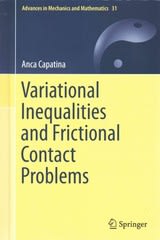Question
Business research report Executive summary Introduction Research design Hypothesis development Statistical technique and justification Results, and statistical and non-statistical interpretation Discussion and conclusion Recommendations References
Business research report
- Executive summary
- Introduction
- Research design
- Hypothesis development
- Statistical technique and justification
- Results, and statistical and non-statistical interpretation
- Discussion and conclusion
- Recommendations
- References
Hypothetical case study- Understanding the commitment of small and medium-sized enterprises (SMEs) to reducing carbon emissions
Small and medium-sized enterprises (SMEs) account for approximately 90% of businesses and more than 50% of employment worldwide (The World Bank, 2022). In Australia, SMEs are comprised of small businesses that hire less than 20 employees and medium businesses that hire between 20 and 199 employees. Collectively, SMEs contribute to more than 99.8% of the businesses in Australia (ABS, 2021). As such, they play a significant role in creating jobs and contributing to economic developmentboth in Australia and globally. They are also a significant source of energy consumption estimated to consume about 13% of global energy (International Energy Agency, 2016). In light of the increased threats of climate change that directly (e.g., extreme weather events) and indirectly (e.g., disturbance on supply chains, increased regulations on carbon emissions) challenge the operation of SMEs, there is an urgent need for SMEs to manage their carbon emissions to support efforts to combat climate change.
In this hypothetical case study, you would play an assumed role as a researcher hired by a government entity to conduct research aiming to address the following research questions through an online survey. The survey results would form the basis of your recommendations to the government entity.
- Is SMEs' intention to reduce carbon emissions (Q5) greater than"neither likely nor unlikely"?
- Does SMEs' intention to reduce carbon emissions (Q5) differ between small enterprises (<20 employees) and medium enterprises (20-199 employees) (Q7)?
- Does SMEs' intention to reduce carbon emissions (Q5) differ between those who perceive negligible, moderate, and substantial financial barriers that prevent them from investing in appropriate carbon reduction mechanisms (Q6)?
- Is there a significant association between SMEs' intention to reduce carbon emissions (Q5) and their commitment to corporate social responsibility (Q1-Q4)?
Hypothetical case study: SME commitment to reducing carbon emissions
A survey was developed to examine the research questions and implemented to an online panel comprised of SME managers or owners via a research company. Overall, 417 SME managers or owners completed the survey. Their responses have been recorded in the SPSS data file.
Please tell me how to add data sets, thank you
Step by Step Solution
There are 3 Steps involved in it
Step: 1

Get Instant Access to Expert-Tailored Solutions
See step-by-step solutions with expert insights and AI powered tools for academic success
Step: 2

Step: 3

Ace Your Homework with AI
Get the answers you need in no time with our AI-driven, step-by-step assistance
Get Started


